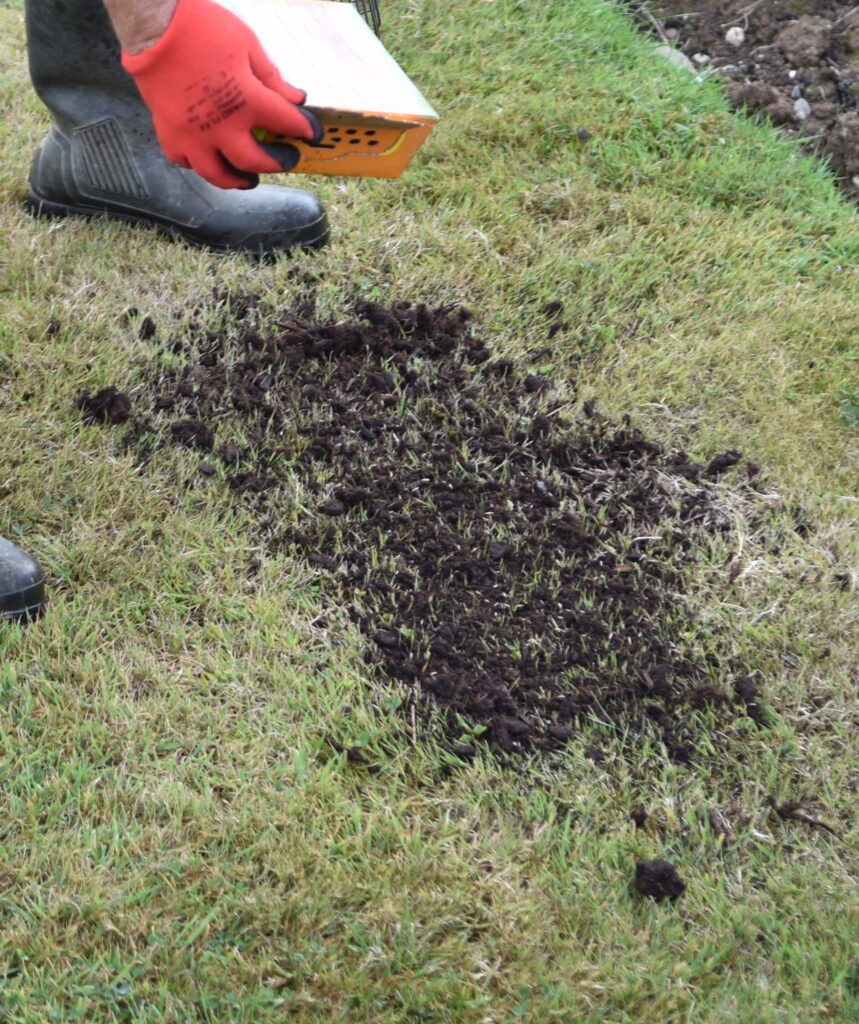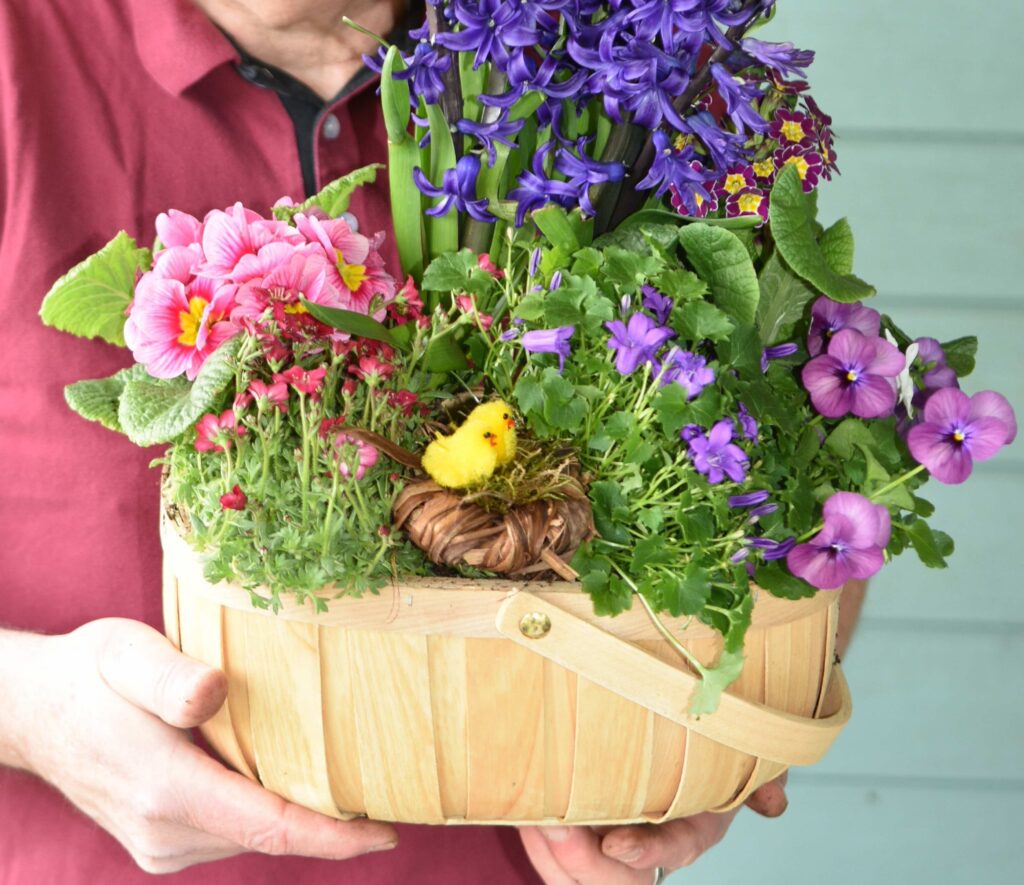
For most people, the Easter holiday heralds the start of the garden year. There is so much to do in the garden to prepare it for summer. But with so many lovely flowers to buy and enjoy I did take some time out to make a little Easter display. I had a wooden trug in the cupboard, lined it with plastic and filled it with seasonal plants. To add a seasonal touch I made a tiny nest by weaving some dead iris leaves into a ring and lined it with moss and popped in some ‘chicks’. It didn’t take long and it took my mind off how wet the garden has been and all the garden jobs I am desperate to do but have not been able to get on with. That is the beauty of gardening in pots and containers – we can often enjoy them when gardening in the rest of the garden is not possible.
But back to the garden. We should have finished pruning the roses by now. If not, there is still time but it needs to be done. Hydrangeas need to be pruned too. The more common ‘mophead’ of ‘macrophylla’ types, with pink, red or blue flowers, should be lightly pruned only, removing the old flowerhead down to a pair of big buds or shoots. The ‘Paniculata’ types with large, creamy heads at the ends of long shoots should be hard pruned now, in the same way you prune buddleias.
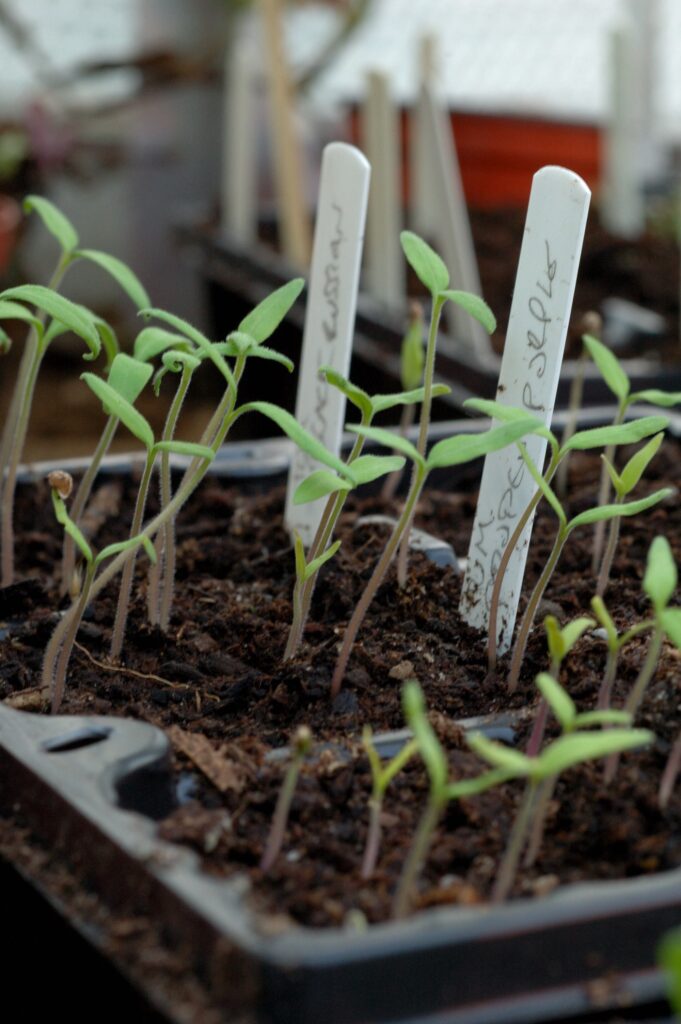
It is seed-sowing time too. Now is the ideal time to sow tomatoes as well as most other bedding plants. You will need pots and cell trays and some fresh compost. Most can be sown and germinated on a windowsill and a clear-lidded propagator is useful to retain heat and moisture around the delicate seedlings.
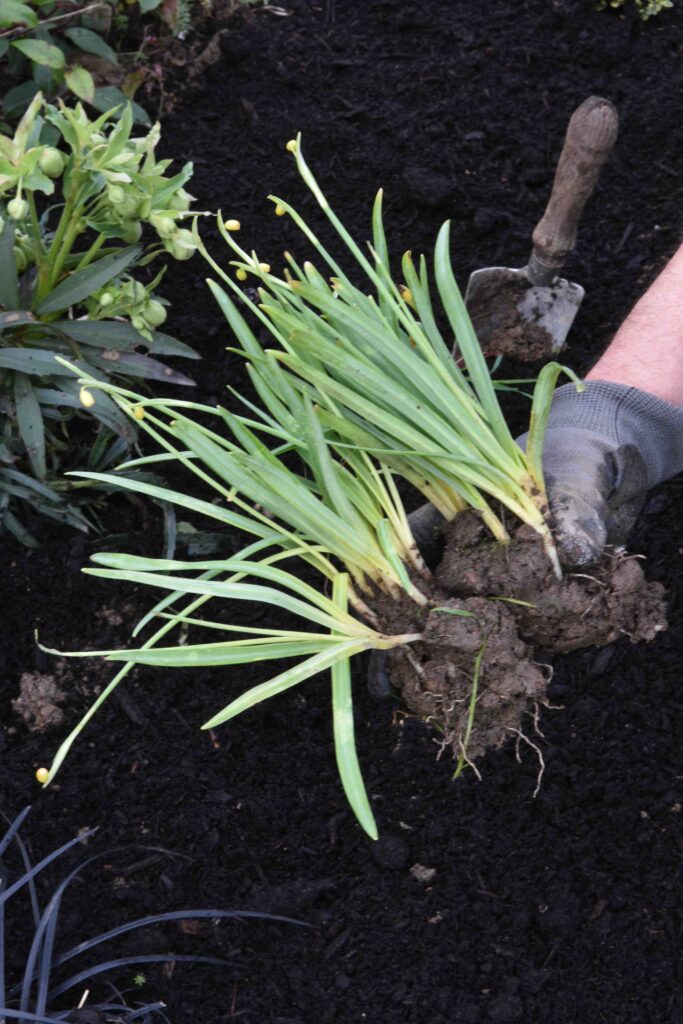
Out in the garden, bulbs need attention. It is the ideal time to divide and replant snowdrops now they have finished flowering. Carefully lift congested clumps and pull them apart into clusters of two or three bulbs and replant them 10-15cm (4-6in) apart. This will maintain the vigour of the plants and turn a congested clump into a drift of flowers next spring.
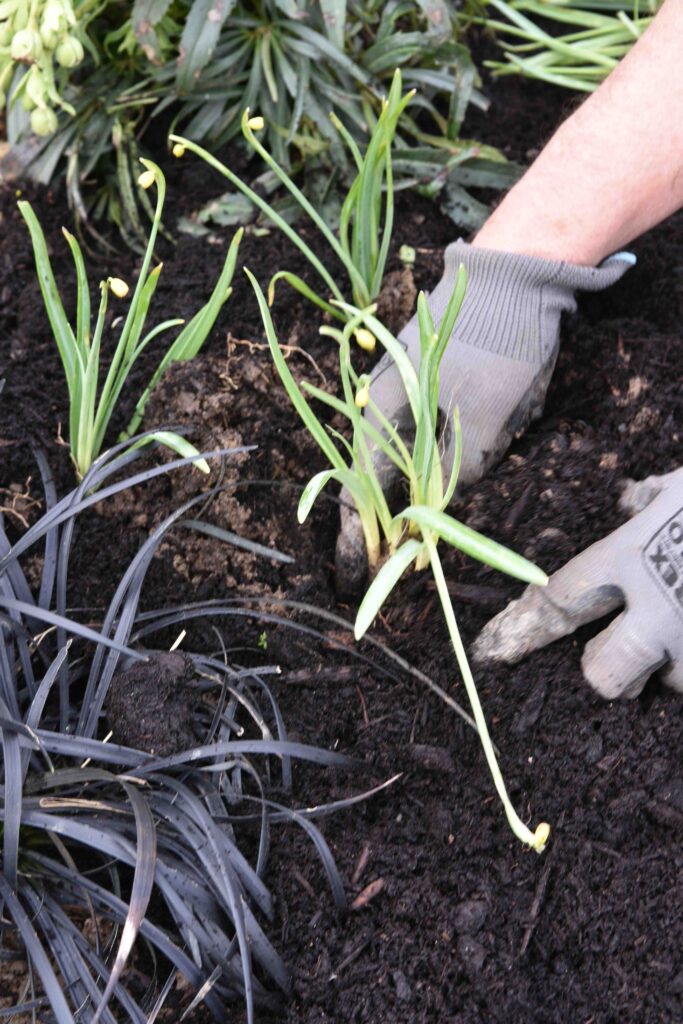
As daffodil flowers fade, snap off their heads. This prevents the formation of seed pods and encourages the leaves to die back more quickly.
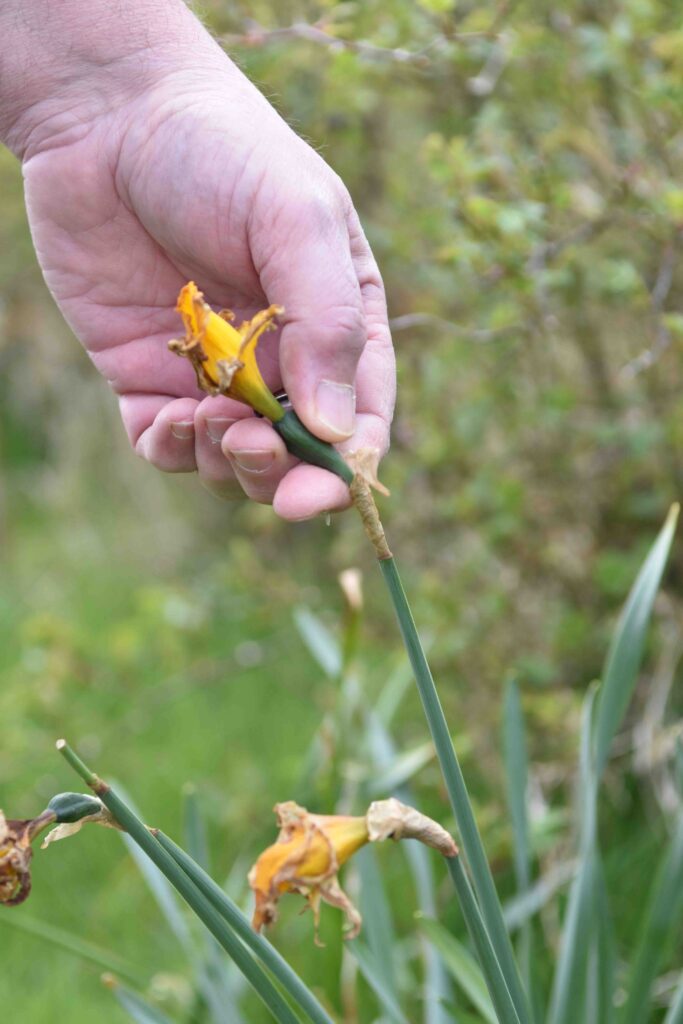
If the ground is not too wet we need to get the veg plot prepared, forking it over and raking ready for planting and sowing. It is the perfect time to plant out sweet peas. They are hardy and will tolerate a little frost. There is just about time to plant onion sets, buy some seed potatoes and a useful, fun job is to plant up a pot of herbs, either for yourself or as a gift.
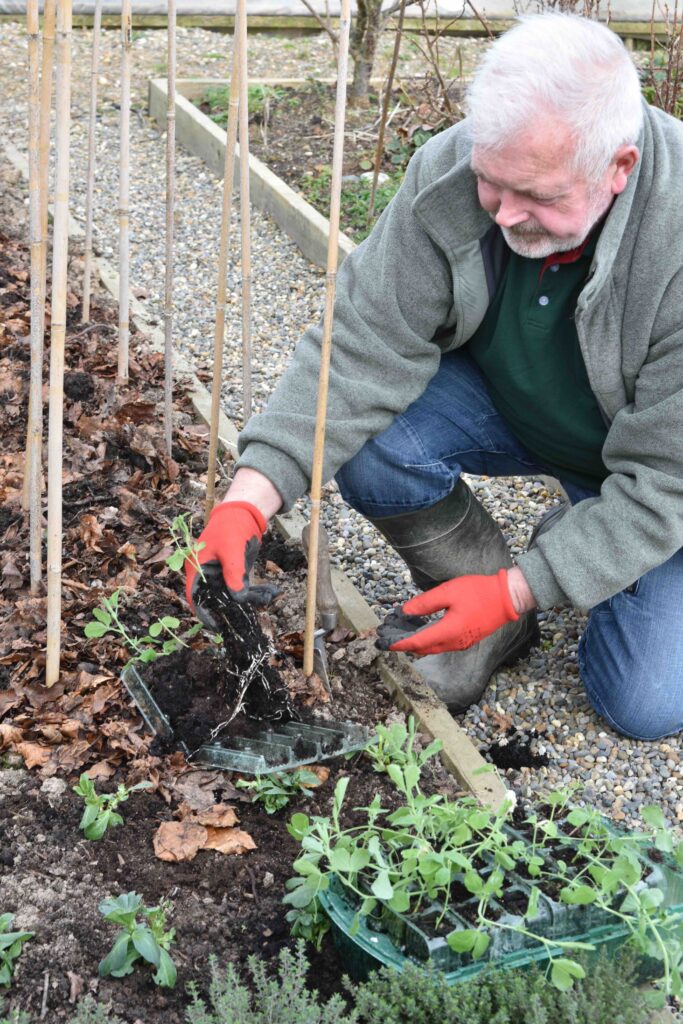
Lawns need attention too. After the wet winter they will need feeding. Applying a lawn fertiliser will turn a yellowing lawn brighter green and make the grass grow more vigorously, which will help crown out weeds.
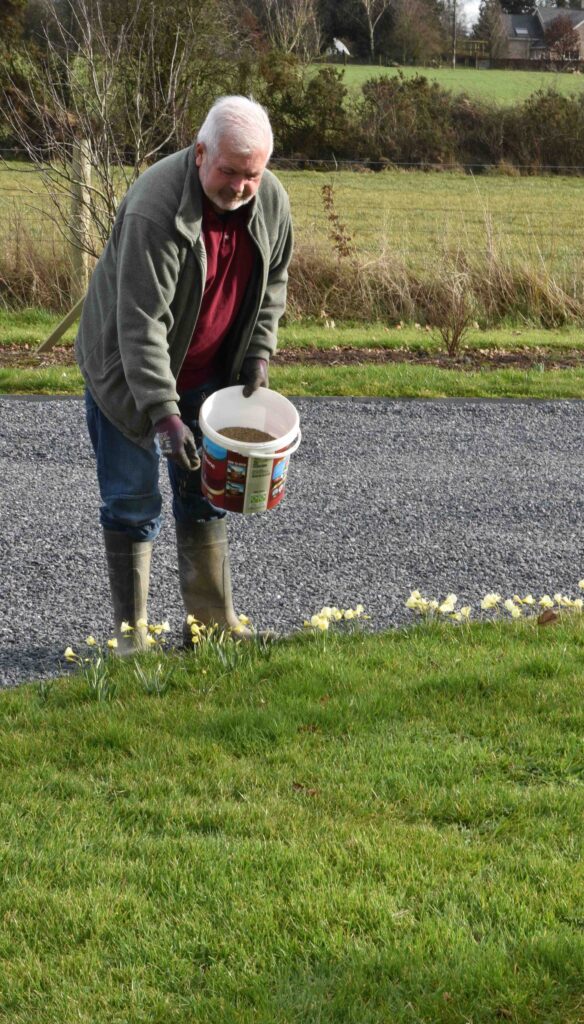
It is time to get out the mower too. The first cut of the season should be with the blades set at their maximum height so you do not ‘scalp’ the long grass. You should not leave it looking yellow and bleached.
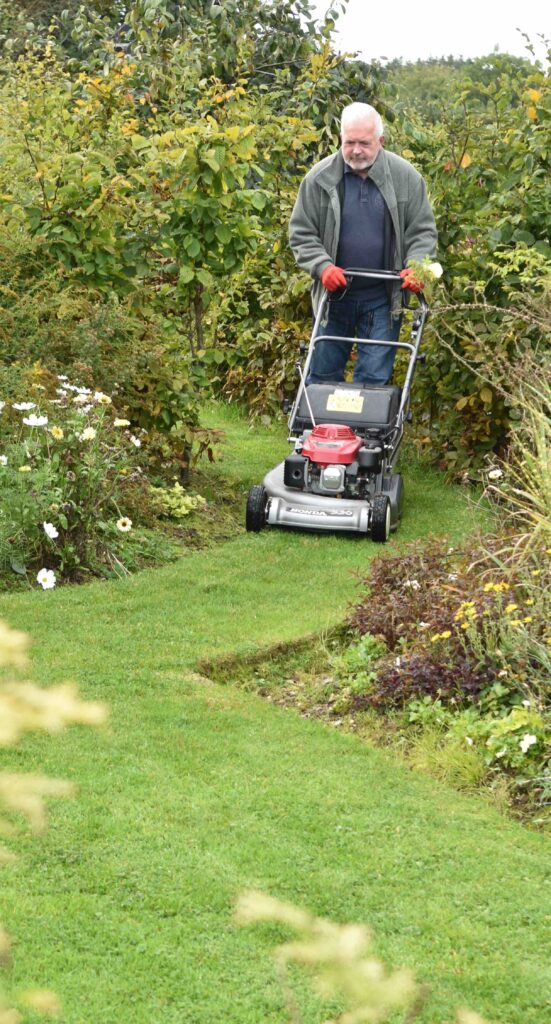
If there are bare patches after winter, now is the perfect time to repair these. You can rake out the dead grass and moss and rake in some compost to make a seedbed for the new grass. Sow the grass seed and water it in, covering with some fleece if birds start to feast on the seeds. Or you can buy a ‘patch repair’ pack at Nag’s Hall.
